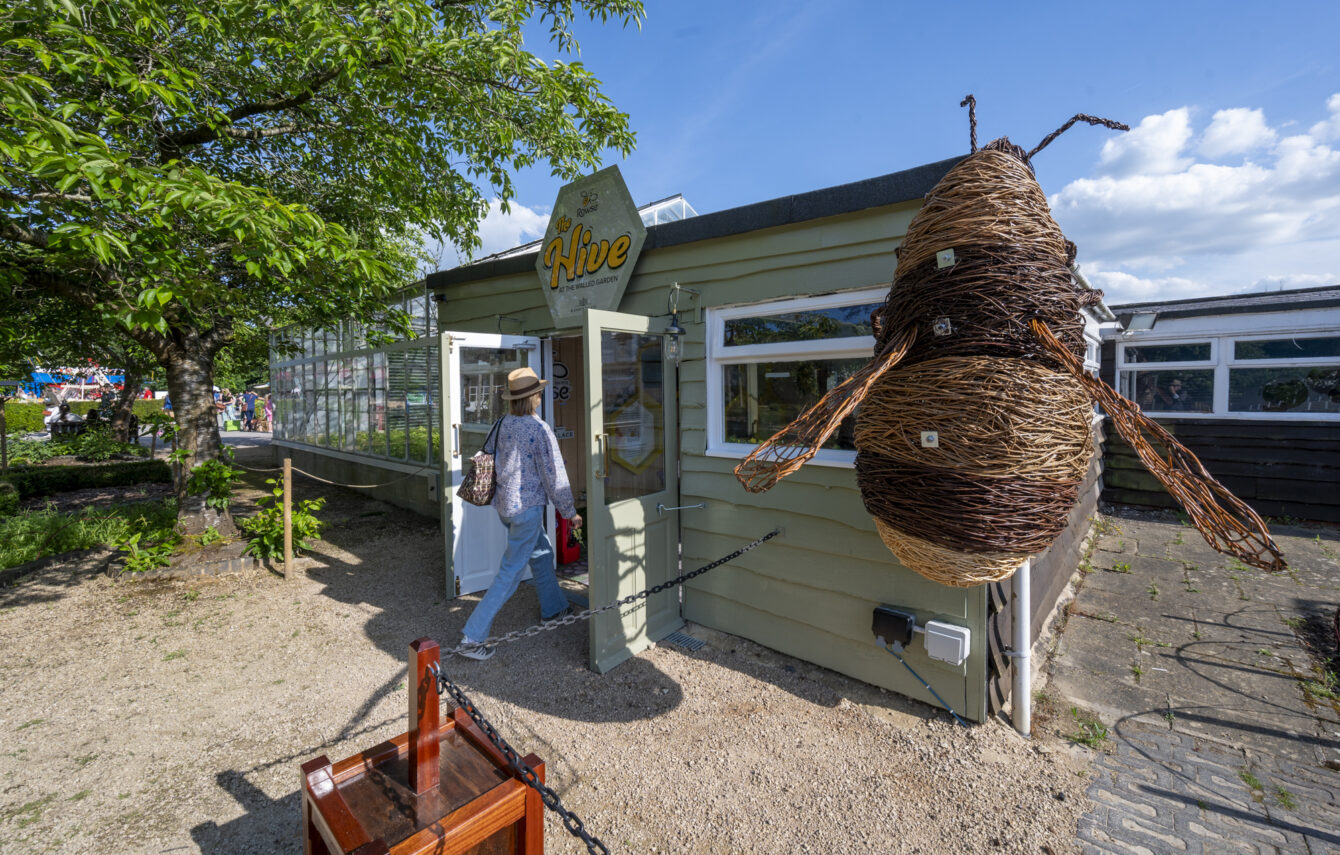Blenheim Palace buzzing with launch of Rowse Honey Bee Hive

There’s a real buzz at Blenheim Palace this half-term, with the opening of the Rowse Honey Bee Hive in the Walled Garden, a new interactive space where families can learn all about the importance of bees and other pollinators.
Opened this week, the Rowse Bee Hive is the latest part of an ongoing conservation project between Blenheim Palace and Rowse Honey, which includes planting wildflowers across the Blenheim Estate and Palace Gardens to help attract more pollinators and wildlife.
Admission to the Rowse Honey Bee Hive is included within the Blenheim Palace ticket, including Annual Pass or a Privilege Pass.
The Rowse Bee Hive has been specifically designed to be interactive, allowing families to learn more about bees, hedgerows, and how they can plant the best varieties of pollinators in their own gardens.
Inside the Bee Hive, children can sit at a special workbench made from Blenheim oaks, where they can create their own little bees and fill in special colouring sheets. They can also climb the steps to look out to see if they can see any pollinators going about their work in the Palace’s Potager Garden.
Roy Cox Managing Director, Blenheim Estate, commented: “The Bee Hive is the latest stage in our ongoing partnership with Rowse Honey, which aims to enhance and expand habitats for pollinators across the Estate, creating a natural environment where wildlife can not only survive, but thrive.
“In the UNESCO World Heritage Site, we are fortunate to care for part of Oxfordshire which has remained relatively untouched for centuries. This makes it a haven for native pollinator species, which can forage on the Estate’s extensive natural flora and wildflowers.”
Libby Nicholson, Brand Manager, at Rowse Honey, said: “Bees are a vital part of our natural ecosystem, pollinating around three quarters of the food crops we eat including many types of fruit, vegetables and seeds. However, the sad truth is that many pollinator species are in decline here in the UK, which means we need to act now.
“Together with Blenheim, we’re working to inspire kids and grown-ups to join us on our mission to protect bees and other pollinating insects for future generations. Our Rowse Bee Hive provides a fun and interactive space for visitors to learn about the important work carried out by these amazing creatures. Across the wider Blenheim Estate, there are also opportunities to discover the impact our Hives for Lives partnership is having on the local area, including 27 new log hives and over 50 acres of nectar-rich wildflowers for the bees to enjoy.”
Visitors can enjoy all of this and the myriad other transformational changes taking place in the gardens at the UNESCO World Heritage Site – with an Annual Pass allowing them to track the project across the seasons; you can book tickets here
ENDS
Issued on behalf of Blenheim Palace and Estate. For more information please contact Jon Perks at Cab Campaign – blenheim@cabcampaign.co.uk
Editors’ notes
About Blenheim Palace
Home to the Dukes of Marlborough since 1705, Blenheim Palace was designated a UNESCO World Heritage Site in 1987.
Set in over 2,000 acres of ‘Capability’ Brown landscaped parkland and designed by
Vanbrugh in the Baroque style, it was financed by Queen Anne, on behalf of a grateful nation, following the first Duke of Marlborough’s triumph over the French in the War of the Spanish Succession.
Today it houses one of the most important and extensive collections in Europe, which includes portraits, furniture, sculpture and tapestries.
Blenheim Palace is also the birthplace of one of Britain’s most famous leaders, Sir Winston Churchill, and it was his father who described the vista on entering the Estate from the village of Woodstock as the ‘finest view in England’.



